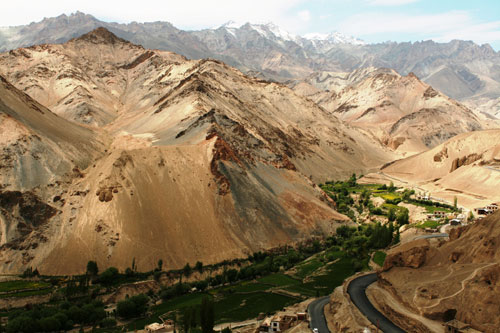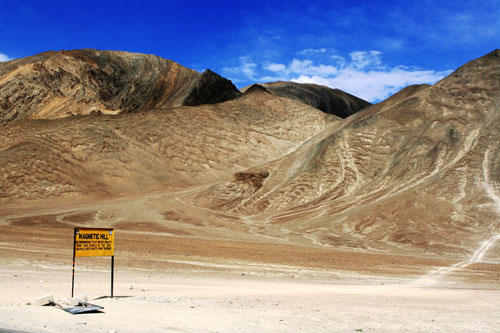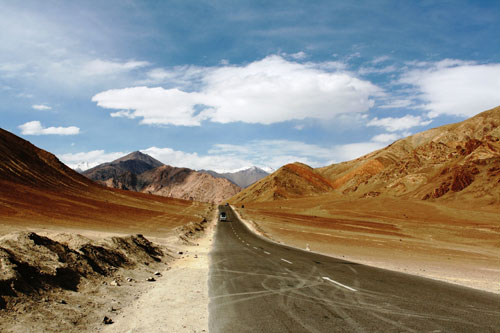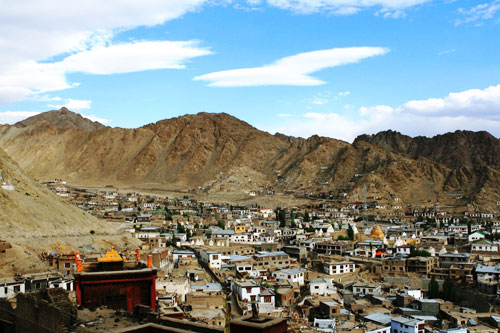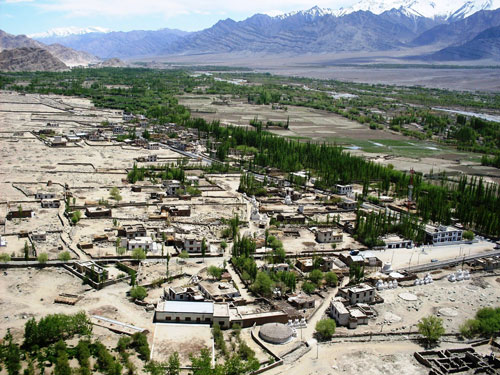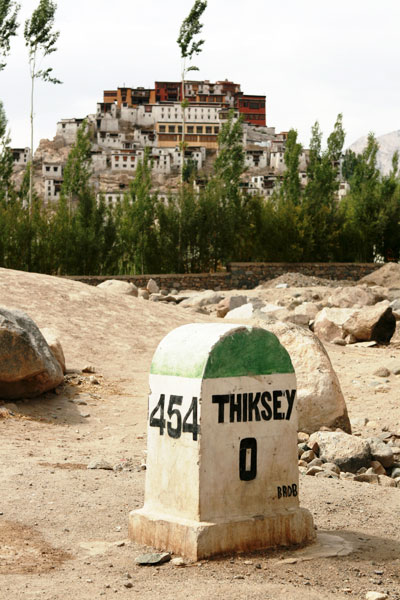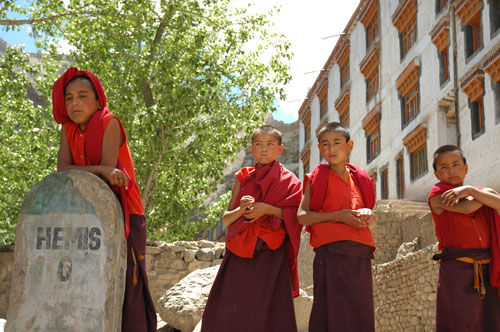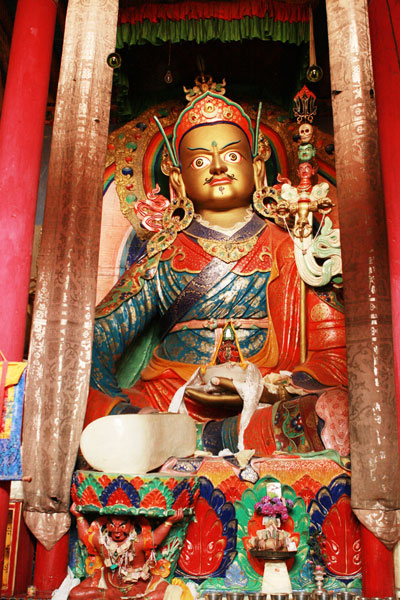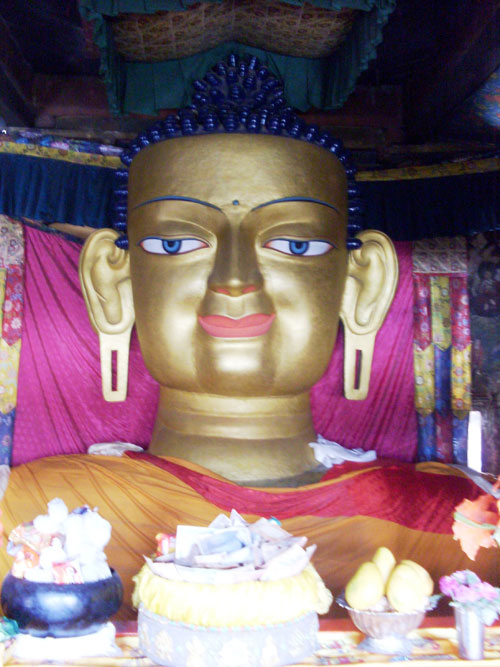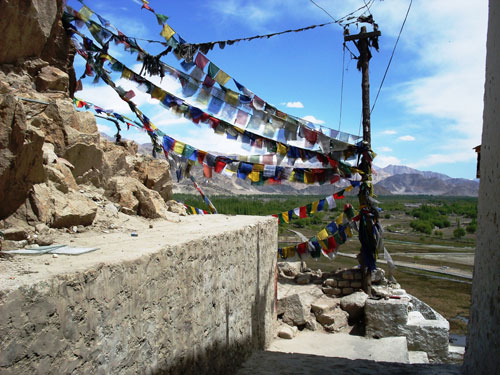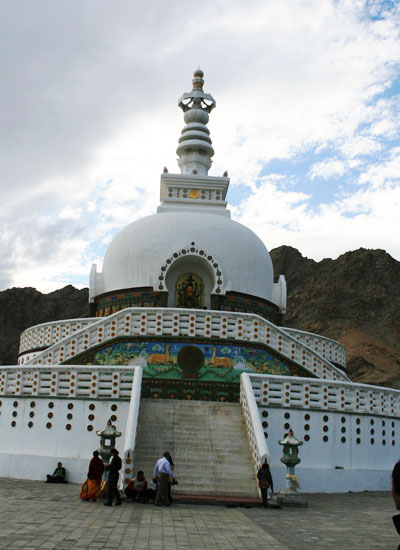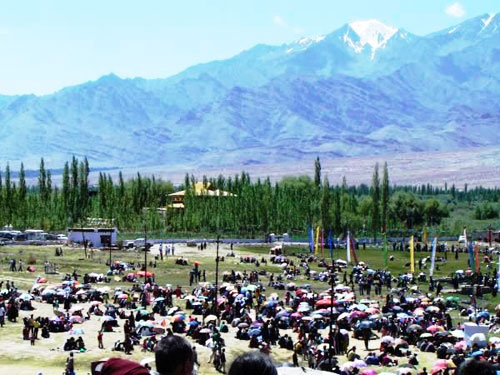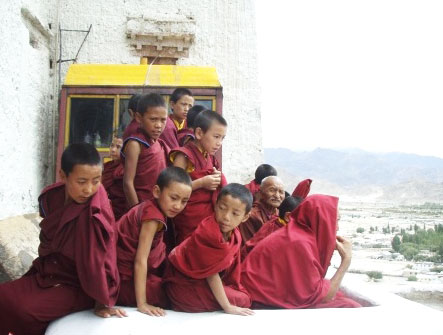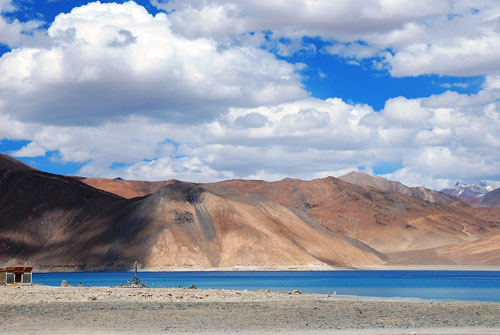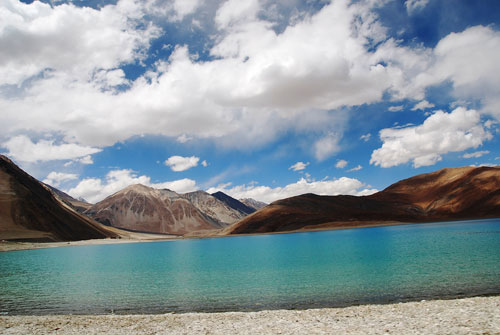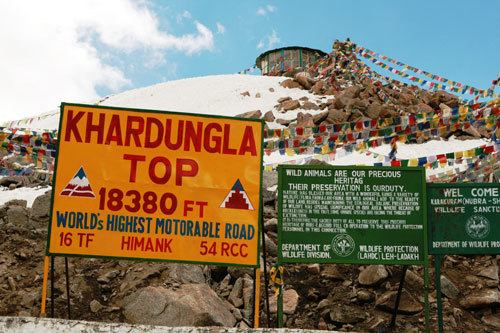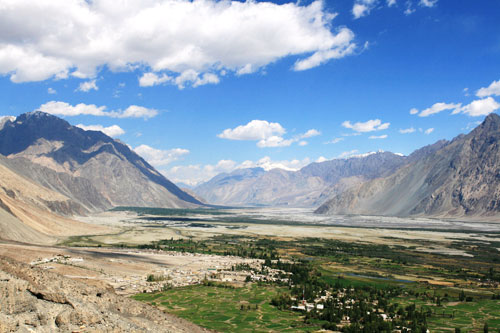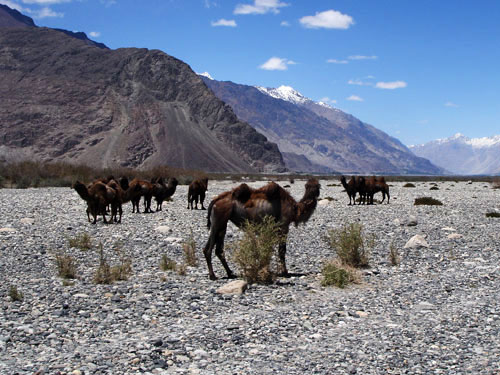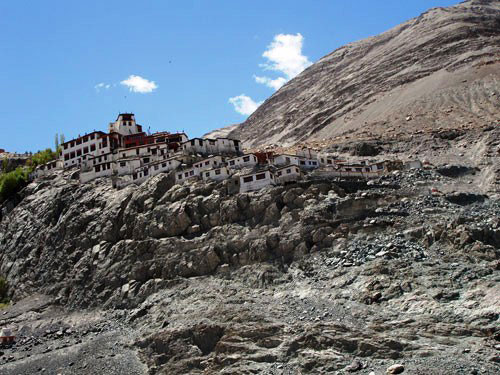Monasteries in Ladakh
The historic monasteries, also known as gompas, are located in the hills and mountains. Buddhist monks and nuns live, study and practise their faith in these monasteries. The Buddhist art and architecture can well be experienced here.
Hemis Gompa
Hemis, the largest monastery in Ladakh,was built in 1630. It belongs to the red sect, Brokpa. Hemis is different from the other important monasteries of Ladakh. is held for two days in June-July, enlivening the courtyard of the monastery.
Namgyal Tsemo Gompa
The Namgyal Tsemo Gompa, built in 1430, contains a three-story high Buddha image and ancient manuscripts and frescoes. The fort above this gompa is ruined, but the views of Leh from here are breathtakingly beautiful.
Sankar Gompa
The Sankar gompa is located a couple of kilometers north of the town center. The gompa belongs to the Gelukpa order and has an impressive impression of the Buddhist deity Avalokiteshwara Padmahari or Chenresig, with 1,000 arms and an equal number of heads.
Shanti Stupa
The Shanti Stupa was built by a Japanese order and was opened by the Dalai Lama in 1985. From the top, one can view the exotic locales nearby. The stupa is located at a distance of 3 km from the Fort Road.
Likir Monastery
Know as Klu-Kkhjil (water spirits) founded in the 11th century AD and was rededicated to another monastic order (the yellow sect) in the 15th century, It contains huge clay images of Buddha and various old manuscripts. It also houses an interesting collection of thankas, old religious and domestic costumes and implements etc. Every year from the 17th to 19th of the 12th month the Likir festival is held.
Siptuk Monastery
The Gompa was founded in 11th century by Od-De The Gompa was named Spituk . The Spituk festival held every year from 17th to 19th days of the 11th month. It houses a collection of ancient masks, antique arms, icons and numerous thankas.
Cave Monastery
The cave monastery of Shergole is small but this old Buddhist monastery has elegant frescoes. It juts out of a brown, granite cliff and appears as if suspended in the middle of the mountain. This architectural quirk makes it an object of curiosity among local people too.
Thiksay Monastery
Thiksey is an imposing monastery and one of the finest example of Ladakhi architecture. This Gompa is situated on the top of the hill and forms part of Gelukpa order. The 12 storey monastery complex contains numerous stupas, statues, thankas, wall paintings, swords and a large pillar engraved with the Buddha’s teachings,there are sacred shrines and a many precious objects to be seen. Thiksey gustor (festival) held from 17th to 19th day of the 12th month.
Shey Monastery
There is another statue of the Buddha three stories in height.Stone carving and many chortens are scattered around the Dresthang Gompa. On the 30th day of the 1st Tibetan month celebrates shey rul-lo and on the 10th day of the 7th Tibetan month the festival of Shey Surb-lo is held.
Stakana Monastery
Built nearly 1580 by great scholar saint chosje Jamyang Palkar during the reign of king Jamyang Namgyal. The Stakna monastery is 45 Km south of Leh, founded on a hill shaped Stakna (Tiger nose). Easily accessible from Leh town.
Stok Place
The elegant four-storey Stok Palace stands above barley terraces studded with threshing circles and whitewashed farmhouses. Built early in the nineteenth century by the last ruler of independent Ladakh, it has been the official residence of the Ladakhi royal family since they were ousted from Leh and Shey two hundred years ago. Still worn on important occasions, the ancient headdresses, thought to have originated in Tibet, are encrusted with slabs of flawless turquoise, polished coral, lapis lazuli and nuggets of pure gold. Also of interest are a couple of swords whose blades were allegedly tied in knots as a demonstration of strength by king Tashi Namgyal Phugtal Gompa.
Alchi Gompa
On the banks of the Indus is the Alchi Gompa, dating thousand years back. One of its walls features thousands of miniature sized pictures of the Buddha. Three large sized images made of clay and painted brightly are its focal attraction. No longer an active religious center, it is looked after by monks from the likir monastery.
Zongkhul Monastery
The spectacular cave monastery of Zanskar, Zongkhul, falls on the Padum-Kishtwar trekking trail, just before the ascent of Omasi-la Pass begins. Situated like a Swallow’s nest on the rock face of the Ating George, the monastery is associated by legend with the famous Indian Yogi, Naropa, who lectured in the Nalanda and Vikramsila Universities.
Lamayuru Monastery
Founded in the 10th century As the legend goes, Lamayuru was a lake. It was blessed by a Lama after which the water of the lake receded up to the mountains leaving place for the monastery to be built. Yundrung Kabgyad festival is held during summer on the 28th and 29th days of the 2nd Tibetan month. Lamayuru has fascinating caves carved out of the mountainside. For sheer spectacle value no other gompa can match Lamayuru.
Leh Palace
The captivating Leh Palace rises from the edge of a hill overlooking the town and stretches out towards the indigo sky. A miniature version of the Potala in Lhasa, the Leh Palace is one of the major attractions in ladakh. The palace was built in the 17th century and had nine storeys , but it is now dilapidated and deserted. It was the home of the royal family until they were exiled to Stok in the 1830s. Above the palace, at the top of the Namgyal hill, is the Victory Tower, built to commemorate Ladakh’s victory over the Balti Kashmir armies in the early 16th century. This palace built for King Singge Namgyal, now houses the Ladakhi branch of the Indian Government’s archaeological conservation organization.

